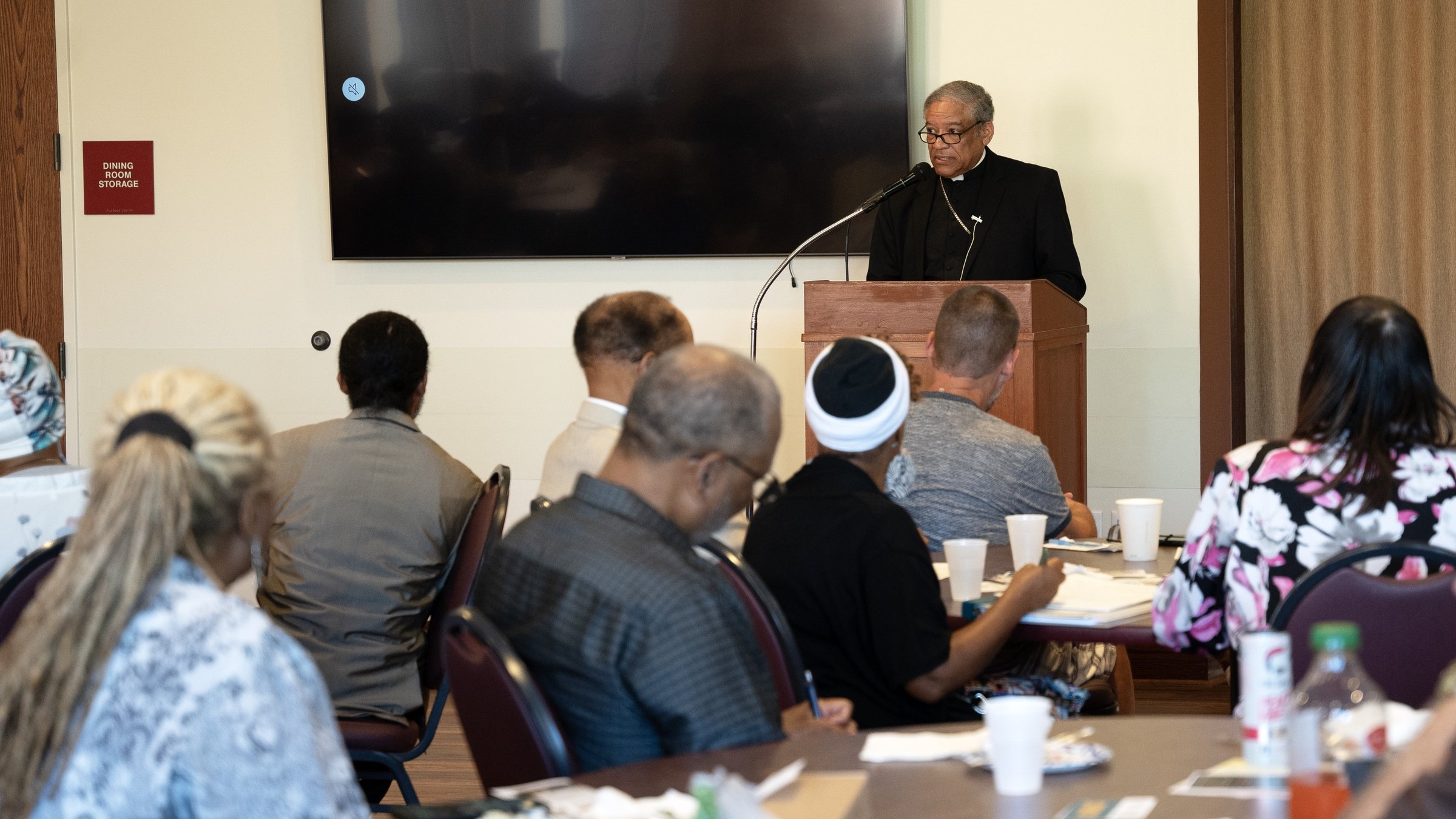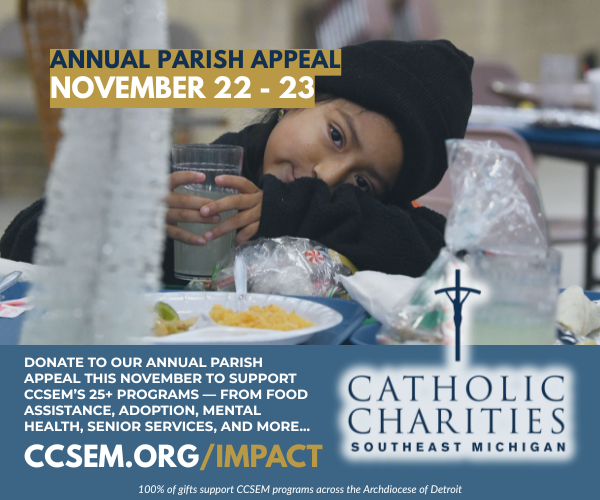Chicago's Bishop Perry offers reflection on landmark 1984 pastoral letter, 'What We Have Seen and Heard,' its ongoing impact
DETROIT — Forty years ago, 10 Black bishops from the United States wrote a letter to African-American Catholics that has reverberated ever since.
On Sept. 15, Black Catholics from the Archdiocese of Detroit gathered at the Solanus Casey Center in Detroit to revisit and celebrate the groundbreaking pastoral letter, "What We Have Seen and Heard," and discuss its implications for the U.S. Church today.
Published on Sept. 9, 1984, the landmark document focused on evangelization, calling on the Black Catholic community in the United States to be missionaries amongst themselves and share their gifts, culture and faith at large.
Approximately 100 people gathered for an afternoon of food, reflection and fellowship, and to listen as retired Chicago Auxiliary Bishop Joseph N. Perry offered reflections on one of the most important documents in the U.S. Church of the last half-century.
The event was organized by the Archdiocese of Detroit's Office of Black Catholic Ministry and the St. Bonaventure Fraternity of Secular Franciscans.
Although there was time for questions, comments and discussion, the majority of the time was spent listening to Bishop Perry, who serves as chairman of the U.S. Conference of Catholic Bishops' Ad Hoc Committee Against Racism as vice postulator for the canonization cause of Venerable Fr. Augustus Tolton.
By a show of hands, Vickie Figueroa, associate director of cultural ministries and coordinator of Black Catholic ministry for the Archdiocese of Detroit, asked those present how many had read the letter. A majority had.
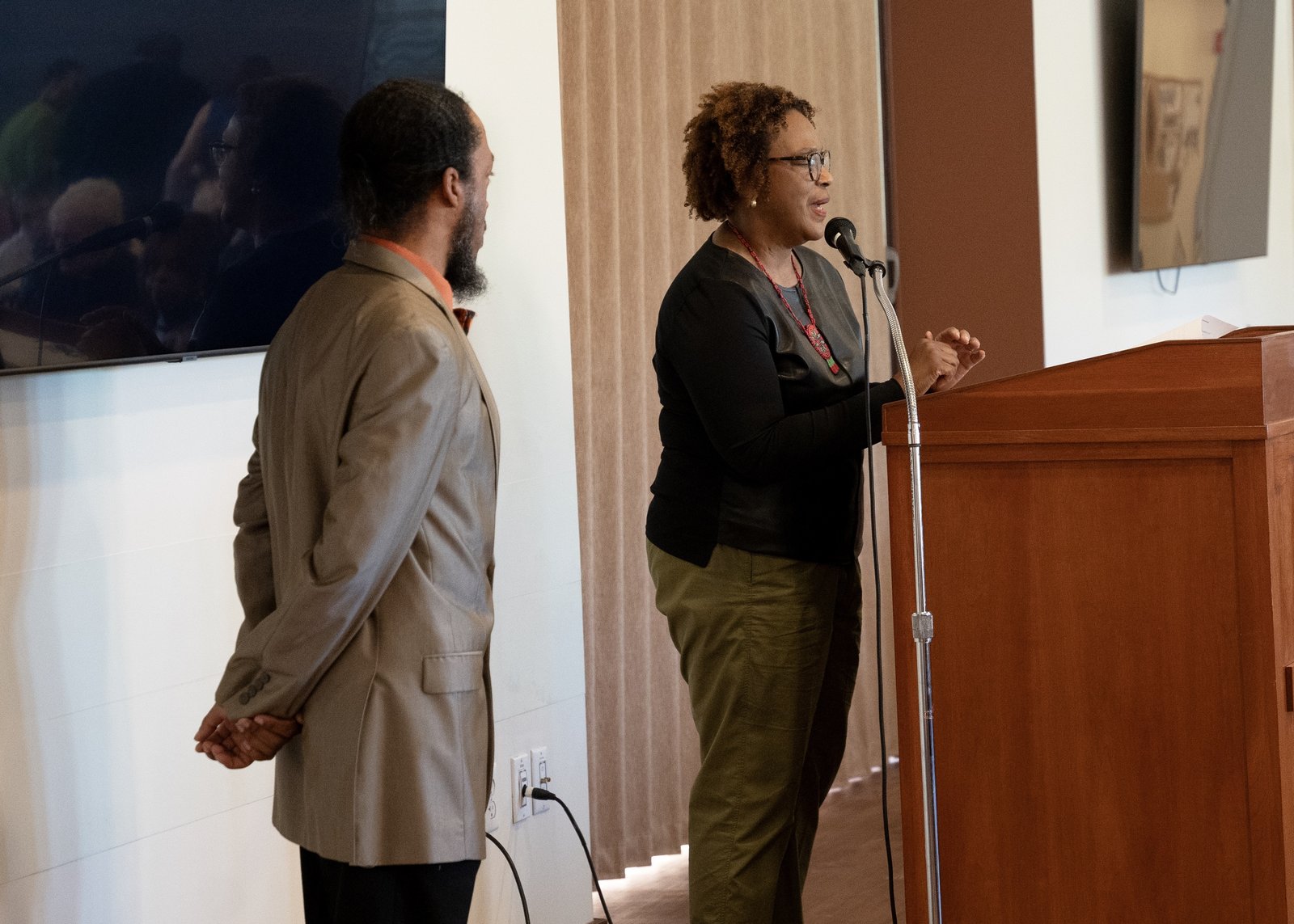
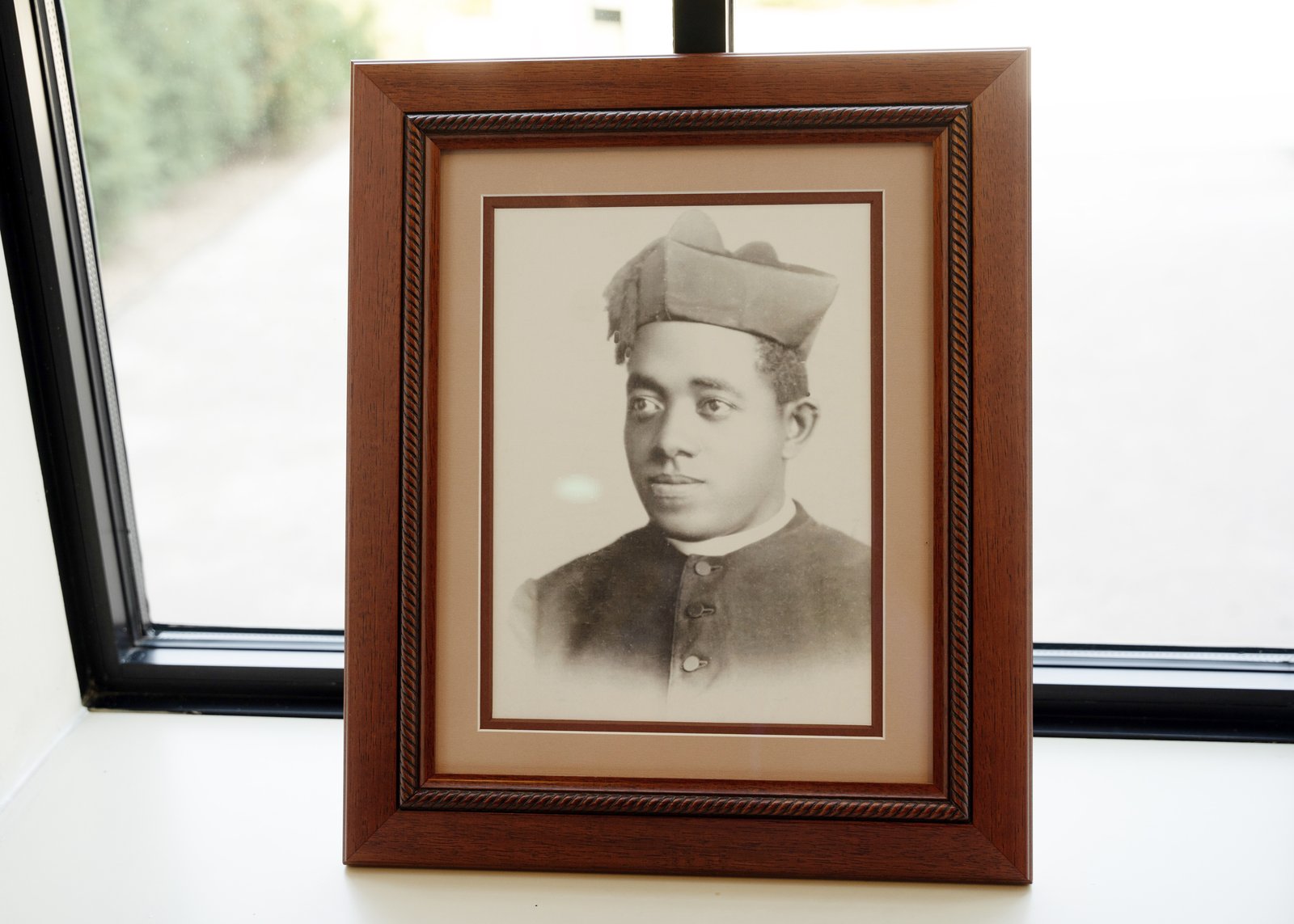
"What We Have Seen and Heard" is divided into two parts, Figueroa explained. The first part is about looking back and reflecting.
“It outlines the gifts we share, some of the challenges and joys of our families, our spirituality, freedom and the various other cultural aspects that we share as African-American people,” Figueroa explained.
Part two is about getting to work, Figueroa said.
“It’s about our call that we are to be evangelizers, not only to ourselves but to others, and it talks about our responsibility to ourselves and our Church,” Figueroa said. “So it is my hope that after today’s program, even if you have read the letter, you go back and re-read it and realize and see what we can do to further engage the African-American community as well as the entire Church of southeast Michigan.”
Before discussing the document's implications in the 21st century, Bishop Perry set the scene and gave context for the environment that led to its publication.
In the wake of the Second Vatican Council and as the civil rights movement began to grow in the United States, the U.S. bishops began to pay particular attention to the pastoral needs of the Black community, Bishop Perry explained.
By 1984, there were more Black Catholic clergy and religious than there had ever been in the United States, Bishop Perry said, including 10 bishops, more than 200 diocesan and religious priests, nearly 200 religious sisters and 300 permanent deacons.
“African-American bishops at the time acknowledged that the African-American community was making its way in the Catholic Church and had a good deal to offer as one among many constituent groups to the broad ethnic and racial projection of the Church in this country,” Bishop Perry said. “We were served and ministered to and evangelized. Now, we were capable of serving, ministering, and evangelizing alongside others in the Church. The African-American bishops wanted the Black Catholic community to recognize this confidently and see themselves assured in their own Blackness and Catholicity, proud to offer their time, talent and stewardship to building up with the Church.”
However, as the presence of Black Catholics within the Church grew, the structures of race relations throughout the country still kept Black and white communities largely segregated.
“White Catholics still had little to no knowledge of their fellow Black Catholics' adherence. One or two Black Catholic appearing was thought an anomaly or something having to do with that provocative thing called ‘affirmative action,’” Bishop Perry explained.
Bishop Perry said that in 1984, the 10 bishops — who included late Detroit Auxiliary Bishop Moses B. Anderson, SSE, as well as current Washington, D.C., Cardinal Wilton D. Gregory — judged it was the right moment to acknowledge and raise up the gifts and potential of their Black Catholic flock.
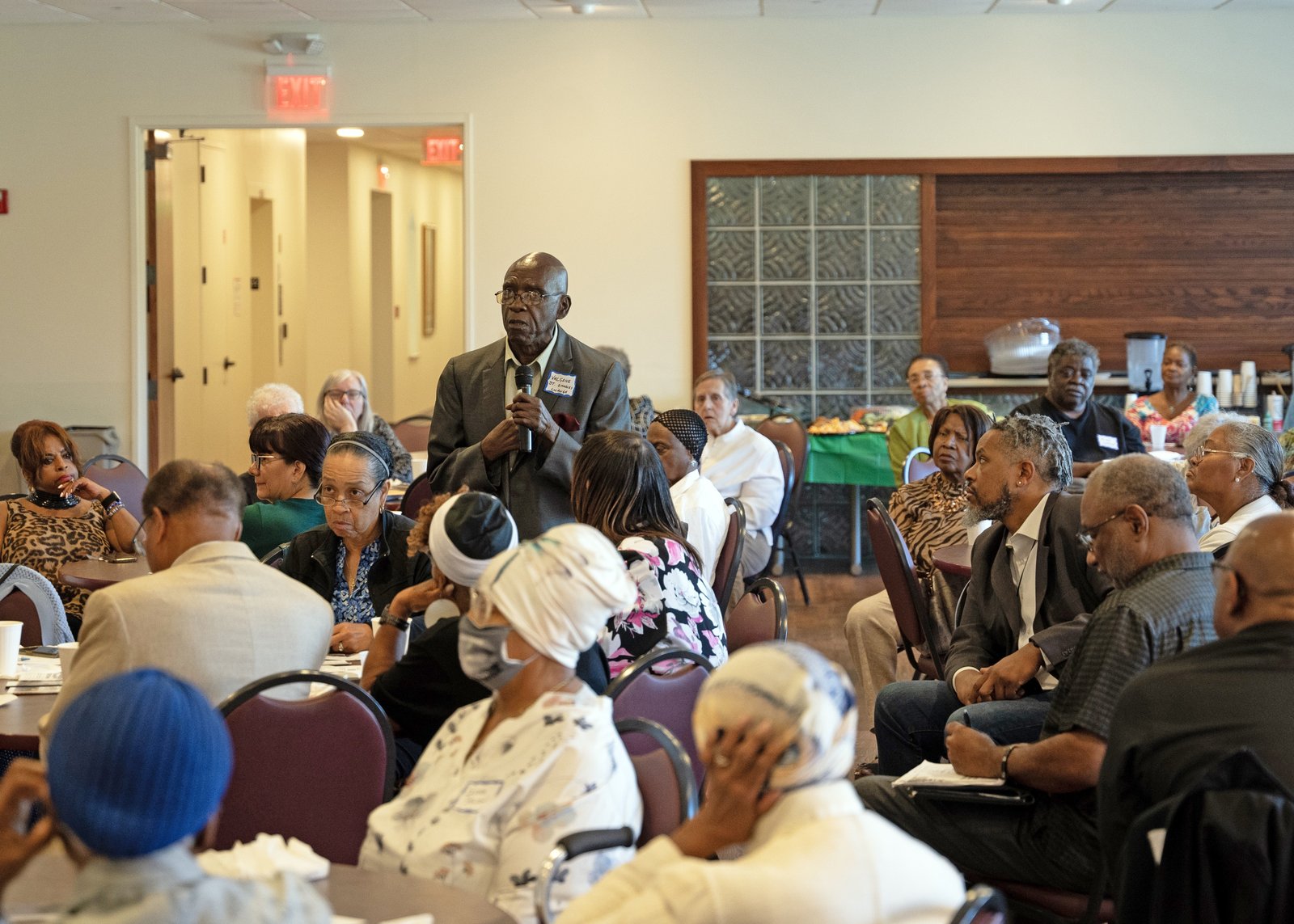
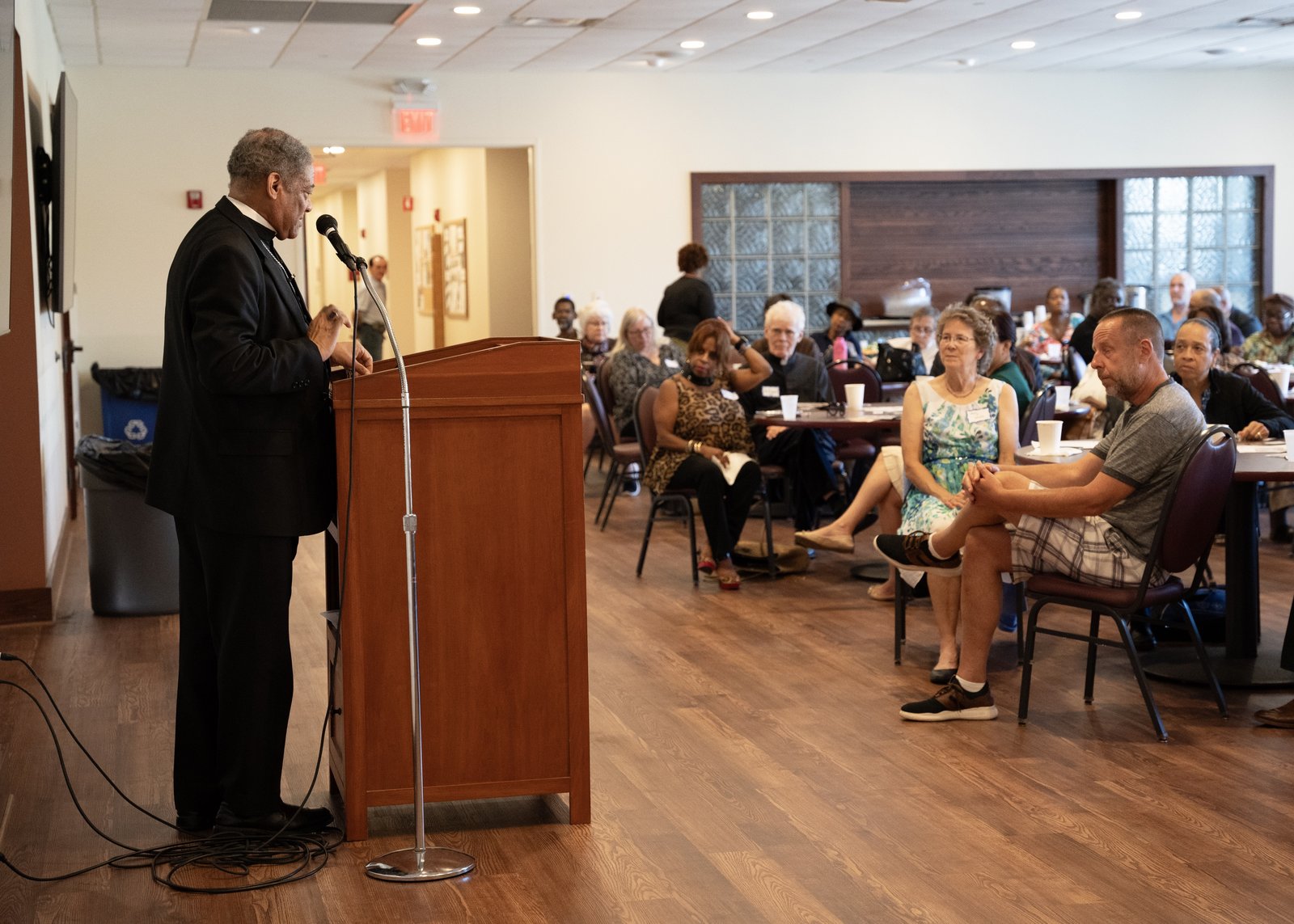
“The summons emanating from the Black bishops' pastoral letter was a call to sow the gifts of Catholicism more effectively in the Black community across the country,” Bishop Perry said. “By means of this unique document, Black Catholics were called to bring forth their own genius for the Catholic works of justice, evangelization, ministerial outreach toward an overall flourishing of Catholic life and Black communities out of the ground of our love for and desire to learn more about our Catholic faith.”
Forty years later, the concerns raised in the pastoral letter remain, some of which are now more “acute” in urban areas, said Bishop Perry, who pointed to the difficulties faced by many Black parishes, particularly in city environments, to not only reach the unchurched in their neighborhood but to afford building upkeep on aging, outsized infrastructure.
“The church campuses we have inherited match larger, earlier populations of European American Catholics who have, in many urban situations, shifted to outlying communities and who seldom have ever returned to worship in churches where they were anointed with the crucial sacrament of initiation and vocation,” Bishop Perry said.
Black Catholics have noticed a diminishment of the Church in their communities, evidenced by closures and mergers and a smaller number of visible Black vocations, Bishop Perry said. He also pointed to an increase in “secularization” of American culture and the diminishment of the importance of religion as a competing factor.
However, all is not lost, and it is time to come up with methods of evangelization that are workable for the times, he added.
“‘What We Have Seen and Heard’ still rings loud and effective in its message for what the Black Catholic community can do to present itself ready and willing for life in the Catholic Church and what leaders in the Church can do to assist in the evangelization of the broader African-American community,” Bishop Perry said.
Even as times have changed and priorities have shifted, the bishops' summons in the pastoral letter still remind Black Catholics “that we need to rise to the moment of ownership of our faith tradition and take ourselves forward,” Bishop Perry added.
For instance, he said, families must be ever vigilant in passing on the faith to children and grandchildren, continuing down the path of faith and hope set by their ancestors. The faith of the Black Catholic community is one tried through crucibles of suffering and discrimination, much like the people of the first covenant, enslaved in Egypt, Bishop Perry said.
“In ways, we are akin to the Israelites wandering in the desert, realizing that we are in a wilderness alone with God, hungry and thirsty,” Bishop Perry said. “The historical hesitancy on the part of the larger Church in America to live and worship with us, paradoxically, has been the conduit of our holiness as a people. In word and sacrament, we intuit the love God harvests for his dark children."
Bishop Perry urged the faithful to embrace the urgency of evangelization and make the bishops’ letter a living document in these times.
“Our religion is not a hobby or some favorite pastime that we have time for today, but maybe not tomorrow,” Bishop Perry said. “Our religion is the very breath we take each second, and our religion is a share in the very life breath of the God we worship.”
Copy Permalink
Black Catholic ministry


